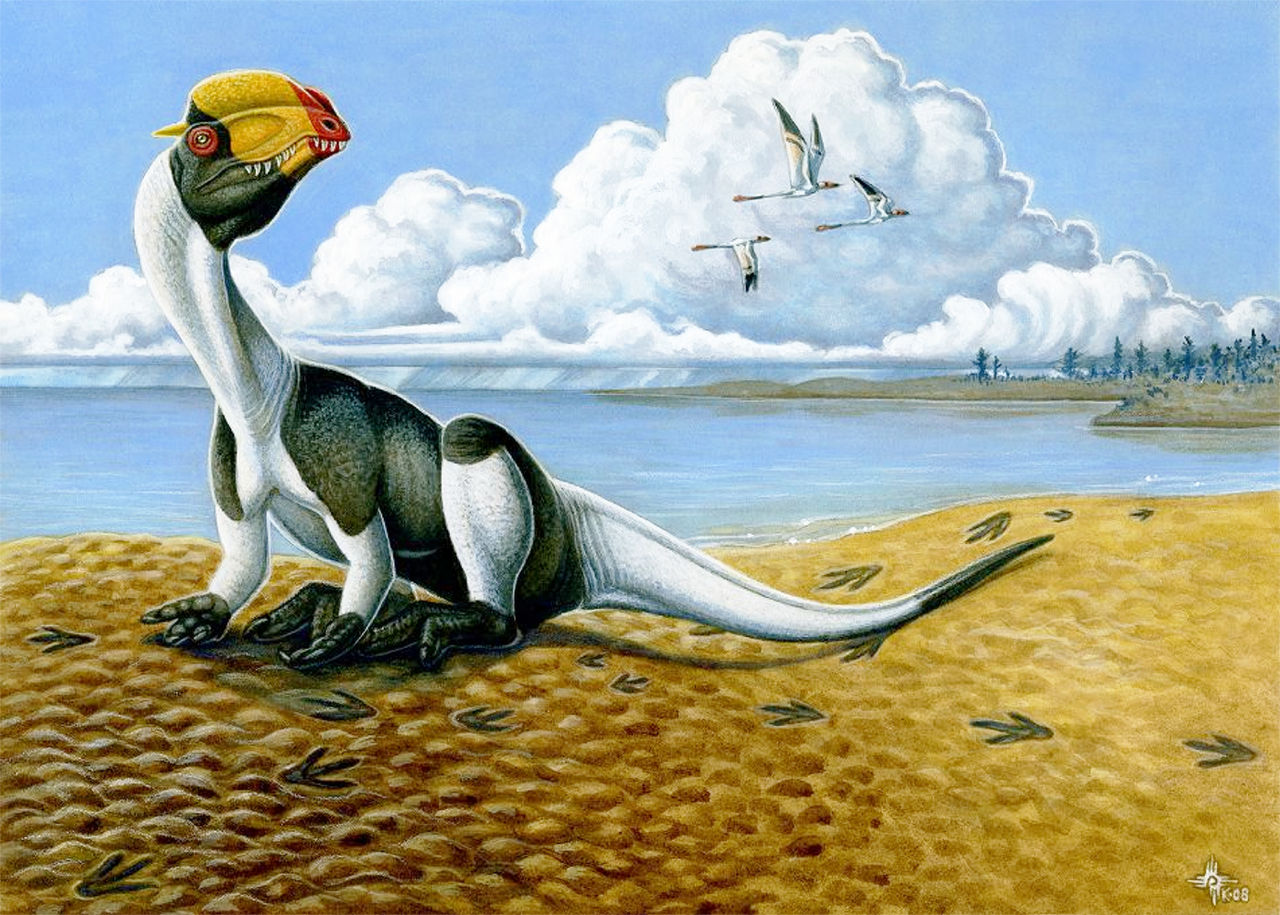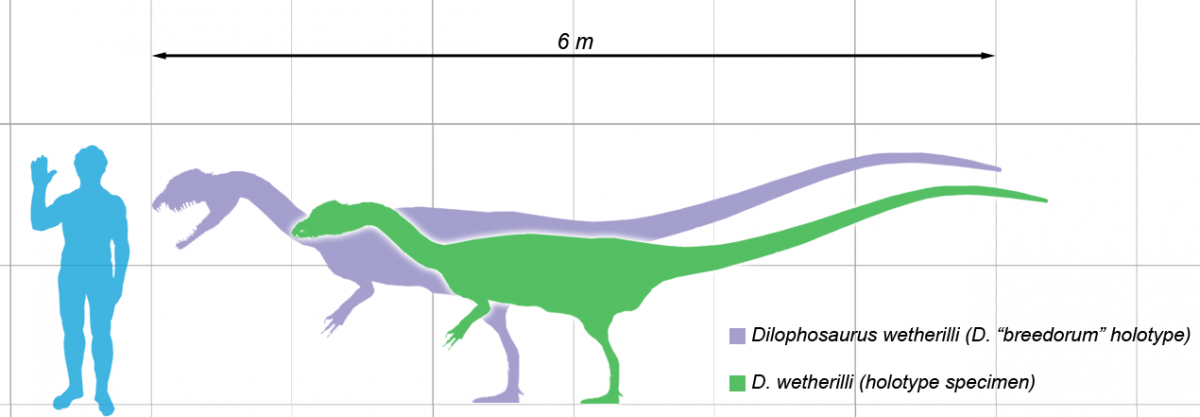Dilophosaurus
Dilophosaurus is a genus of theropod dinosaur. It contains a single known species, Dilophosaurus wetherilli, known from fossil remains found in the Kayenta Formation of Arizona. This rock formation has been dated to the early Jurassic Period (Sinemurian age), about 193 million years ago. Dilophosaurus was among the largest carnivores of its time (about 7 meters long) and had a pair of rounded crests on its skull.
Fossils of Dilophosaurus, one of the earliest of the large theropods, were first found in 1942, in early Jurassic sediments in Arizona. More recently, remains of this animal have also been discovered in China. It was a close relative of Coelophysis, and, like this earlier dinosaur, had four fingers on each hand. The fourth finger, however, was very small and probably had no function.
As a more primitive predatory dinosaur, Dilophosaurus didn’t have forward facing eyes to give it stereo vision. It may have used scent as an integral part of its hunting technique. It had long and slender, rear-curving teeth in long jaws and strong front arms which would have been effective in grabbing prey. It was fast – probably with a top speed of about 30-mph. It also had a long tail that could have been used as a whip in a fight. Footprints attributed to Dilophosaurus appear in groups, so it may have hunted in small packs. It shares the same overall body configuration as Coelophysis even though Dilophosaurus is currently classified as a member of a different group of theropods rather than Coelophysis and its relatives.
Dilophosaurus had long, sharp, pointed teeth. However, it probably did not use its teeth to kill its victims; some scientists have suggested that its jaws were not strong enough to enable it to have fed on live prey. It probably used its clawed hands and feet to kill its victims and then fed on their carcasses. It may also have scavenged animals killed by other predators.
In the movie Jurassic Park, Dilophosaurus is depicted with an extendable frill – rather like that of an Australian frillnecked lizard – and also as spitting poison. However, imagination has ruled the day here for there is no evidence for either of these features. The idea that it spat venom may have resulted from suggestions that, as it seemed unable to attack live animals with its teeth and jaws, it killed them with poison. However, as no living crocodylian or bird is known to use venom in this way, there can be no reason to suppose that Dilophosaurus did.
The most distinctive characteristic of Dilophosaurus is the pair of rounded crests on its skull, made up of extensions of the nasal and lacrimal bones. These are considered to be too delicate for anything but display purposes. Dodson (1997) noted that cranial crests first appeared in Dilophosaurus and were later retained, in one form or another, by other theropods.
The function of the crests on the skull of Dilophosaurus have been the subject of speculation among scientists ever since they were discovered. Traditionally, these bizarre cranial structures (and similar structures and post-cranial armor in other dinosaurs) were thought to be variously for attracting mates, intimidating/fighting rivals in the group, and intimidating potential predators of other species. However, Padian, Horner and Dhaliwal (2004) argued that phylogenetic, histological, and functional evidence indicates that these bizarre structures were most likely used for intra-species recognition.



![The first three dimensional, standing skeleton of Dilophosaurus, Museum of Northern Arizona[19]](/sites/default/files/The%20first%20three%20dimensional%2C%20standing%20skeleton%20of%20Dilophosaurus%2C%20Museum%20of%20Northern%20Arizona.jpg)







